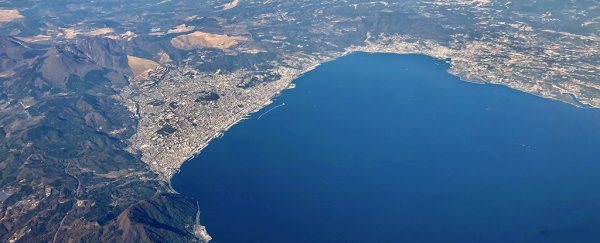The Anthropocene is the name some scientists are giving to the current geological epoch, marked by the point in time when human activity started having a significant impact on the geology and ecosystems of Earth – not least through climate change.
Now scientists think they have precisely determined the beginning of the Anthropocene through particular biomarkers – radioactive material discovered in marine sediments and corals in the northwest Pacific Ocean, off the coast of Japan.
That material comes from atomic tests carried out in the region during the 1950s and represents a clear change in the ocean environment.
Based on the collected data, the research team proposes that the Anthropocene epoch began in 1954.
"Our task was to find clear indications of fallout from the 1950s up to 1963 when testing largely stopped. We took core samples from the bay area, and there are clear signals of the plutonium from fallouts," says geoscientist Yusuke Yokoyama from the University of Tokyo in Japan.
"However, we also collected coral skeletons from the island of Ishigaki, southwest of Okinawa, which contained fallout. Comparing sediments to corals allows us to more accurately date the signatures we see in the sediments."
What makes the collection and collation of these samples so difficult is that sediments can be dispersed over a wide area and moved very easily by ocean currents and other factors. This meant cross-referencing sediments with corals that are fixed in place was crucial.
In the same way that trees do, corals have distinct rings that correlate to specific years of growth. While they don't give scientists as much information about the state of the water, they are a good complement to the sedimentary material in terms of dates.
A variety of chemical analysis techniques were used to study the slices of sampled sediment in detail, including Accelerator Mass Spectrometry, or AMS, which deploys accelerated ions in order to identify individual isotopes in sediment.
"It was challenging to analyze plutonium within our samples, as during the period in question, three tons of plutonium were released into the sea and atmosphere, but those three tons dispersed far and wide. So we're actually looking for incredibly small signatures," says Yokoyama.
Officially speaking, the geological epoch that we're currently in is the Holocene – it started roughly 11,700 years ago, and scientists from numerous fields think that the major shifts we've seen in recent decades, mostly triggered by humans, need to be recognized.
At the moment, no one can really decide when the Anthropocene should start: the industrial revolution perhaps, or the start of the rise in carbon emissions. But for the scientists behind this new study, there's a distinct point at which it begins.
"This work is important not just to solidify the definition of the Anthropocene, but also because the successful use of our method means it could also be used to improve ocean and climate models, or even help explore past tsunamis and other geological hazards," says Yokoyama.
The research has been published in Scientific Reports.
